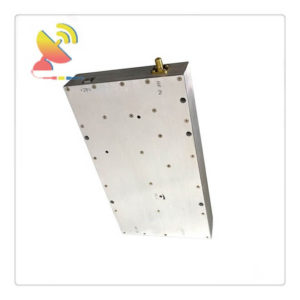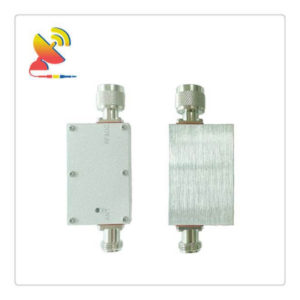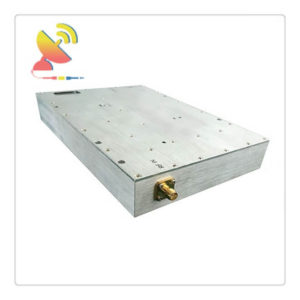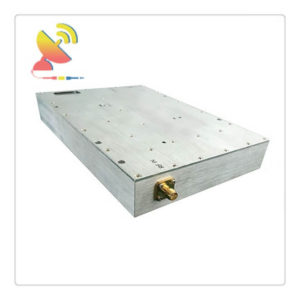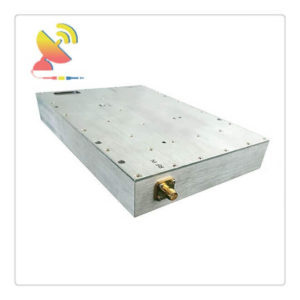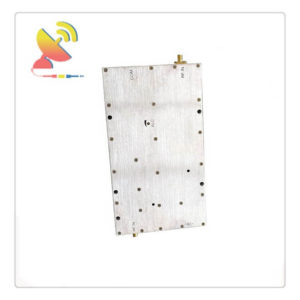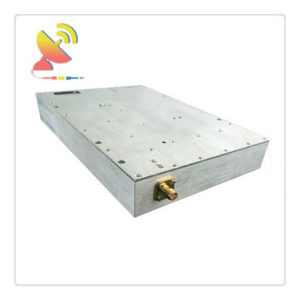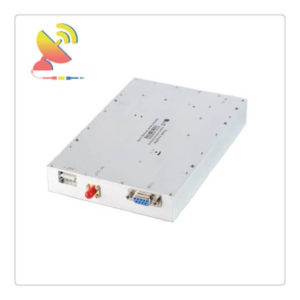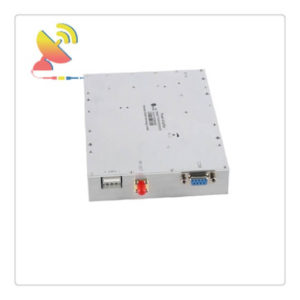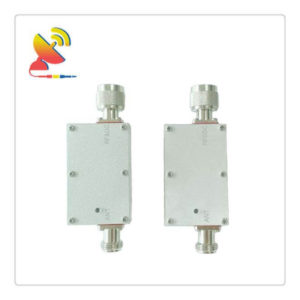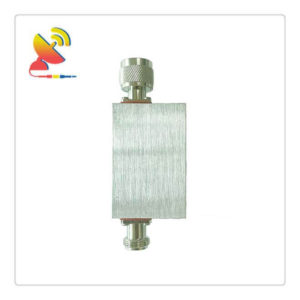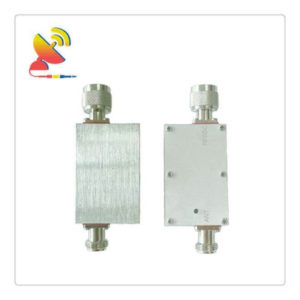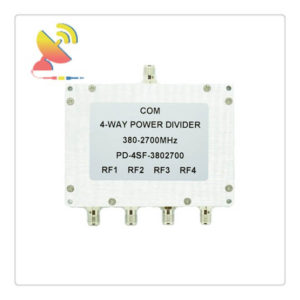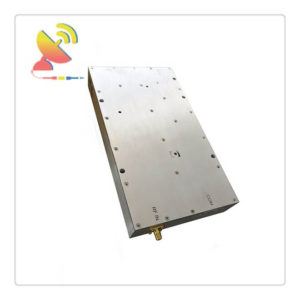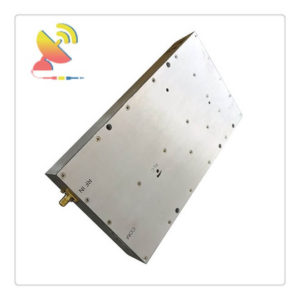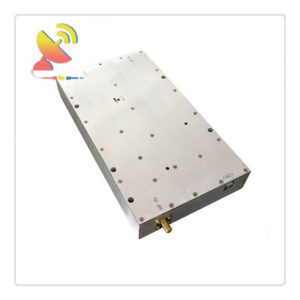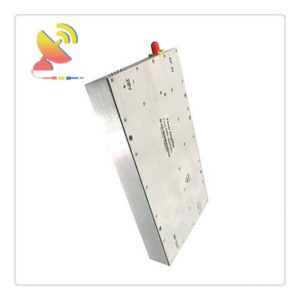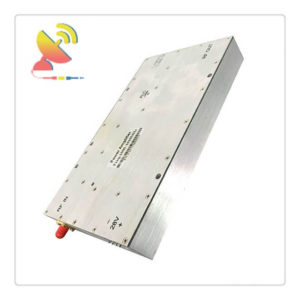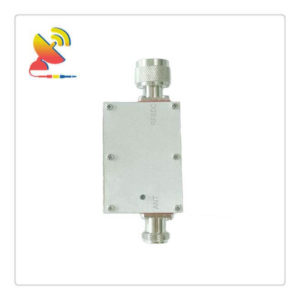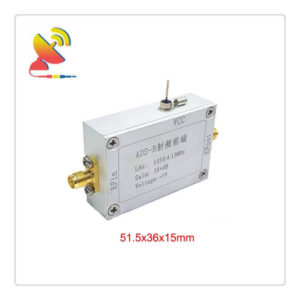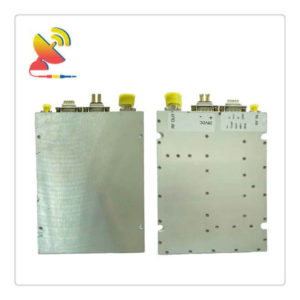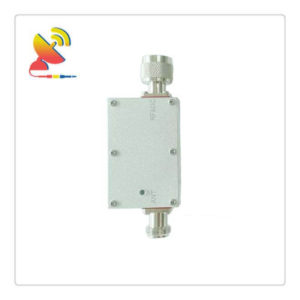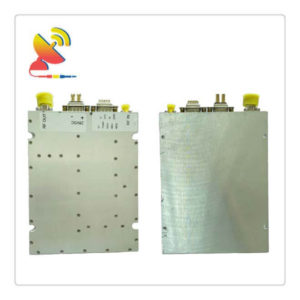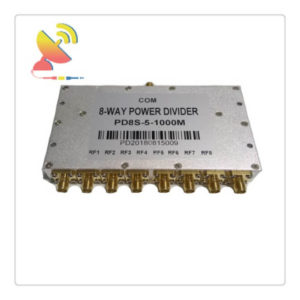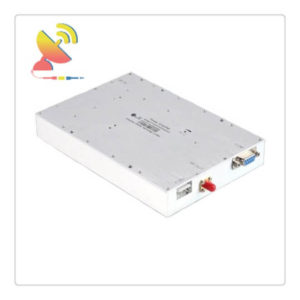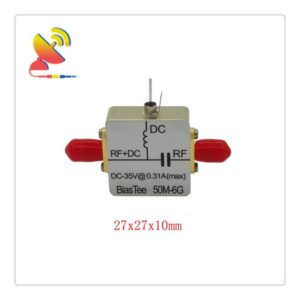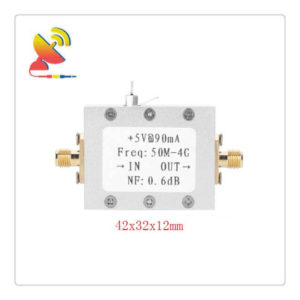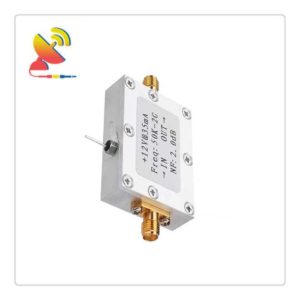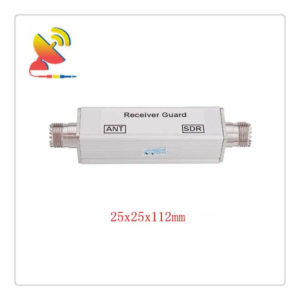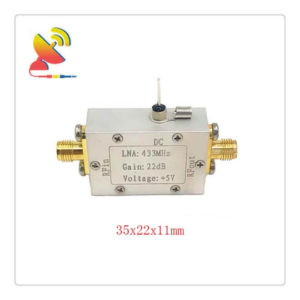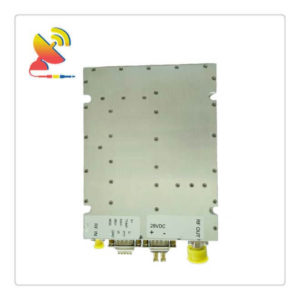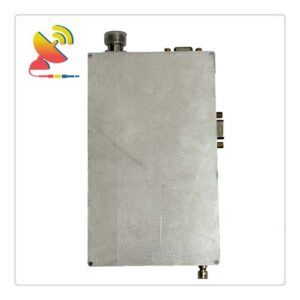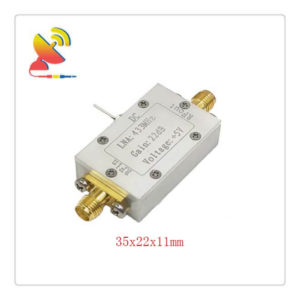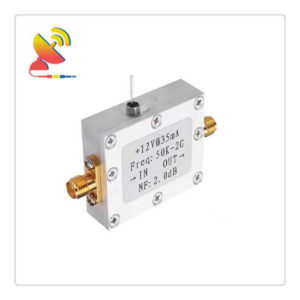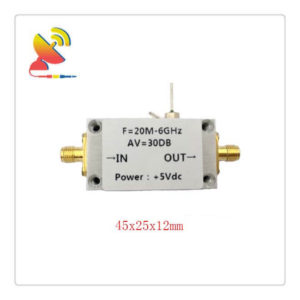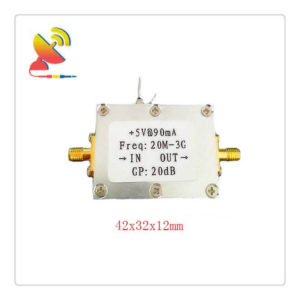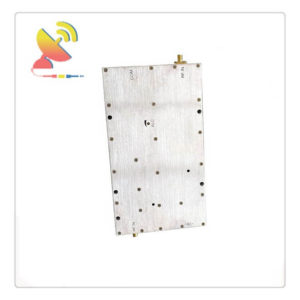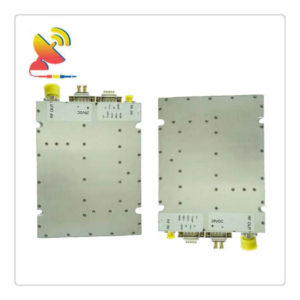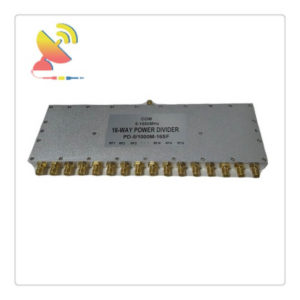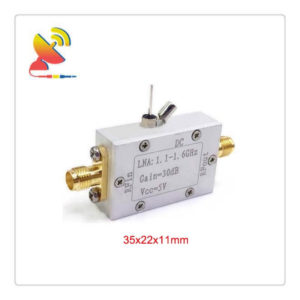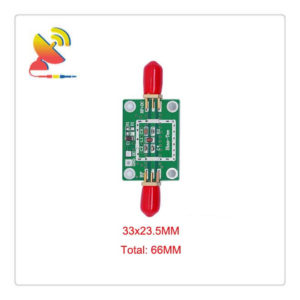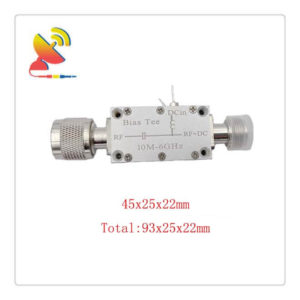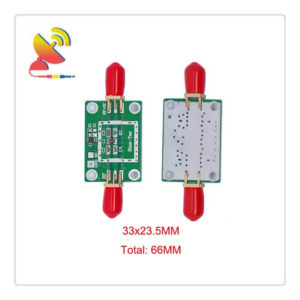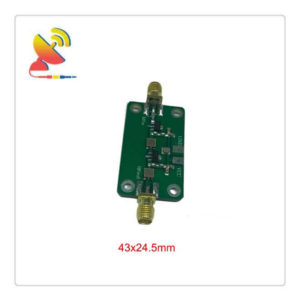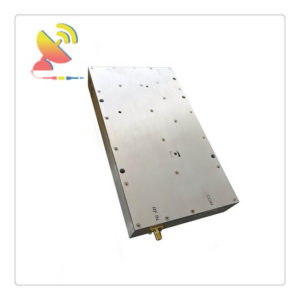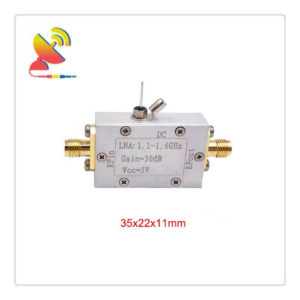Amplifiers And Repeaters
-
VHF Power Amplifier 136-174 MHz 100 Watt Amp
Read more -
VHF Amplifier 136-174 MHz Amplifier
Read more -
Ultra-Low Noise Amplifier Bidirectional RF Amplifier
Read more -
UHF RF Amplifier 433 MHz Amplifier
Read more -
UHF Amplifier 400-450MHz 100W RF Power Amplifier
Read more -
UHF 150-Watt Power Amplifier
Read more -
RF Power Amplifier 2.4 GHz Amplifier
Read more -
RF Power AMP 900MHz 100W RF Power Amplifier
Read more -
RF Amplifier VHF 136-174MHz 100W RF Power Amplifier
Read more -
RF Amplifier UHF Amplifier
Read more -
RF Amplifier Module New 5G NR Amplifier RF Power Amplifier
Read more -
RF Amplifier 2.4 GHz Wifi Amplifier
Read more -
Power Amplifier 100W UHF Amplifier
Read more -
PA Amplifier 433MHz RF Power Amplifier
Read more -
New 5G Amplifier NR Power Amplifier
Read more -
Low Noise Amplifier Bi-directional Lora Amplifier
Read more -
High-Performance 50-Watt RF PA 433MHz Amplifier
Read more -
High-Performance 433MHz Power Amplifier
Read more -
High Gain Low Noise Amplifier LNA Amplifier
Read more -
High Gain High Performance 900 MHz Bidirectional Amplifier
Read more -
Extra-Wide Band RF Power Splitter 4-Way Power Divider
Read more -
Class D Amplifier 50W RF Power Amplifier
Read more -
Class AB Amplifier 2100MHz 100W Power Amplifier
Read more -
Class A Amplifier Best Amplifier GPS GNSS Amplifier
Read more -
Best Power Amplifier Wifi 5G Amplifier
Read more -
Best Amplifier GSM 1800MHz 100W RF Power Amplifier
Read more -
BDA Bidirectional Amplifier 868MHz LNA Amplifier
Read more -
ADS-B LNA 1090 MHz Low Noise Amplifier
Read more -
915MHz Amplifier 100W RF Amplifier
Read more -
915 MHz Bi-directional Amplifier BDA Amplifier
Read more -
900 MHz Amplifier RF Tuned Amplifier
Read more -
868MHz Amplifier RF Power Amplifier Module
Read more -
868 MHz Power Amplifier 100 Watt Amplifier
Read more -
8-Way RF Power Divider
Read more -
8-Way Power Splitter 5-1000MHz RF Power Divider
Read more -
5G NR Amplifier 50W RF Power Amplifier
Read more -
5G Amplifier Wifi Class AB Amplifier
Read more -
50W 2600 MHz LTE Power Amplifier Module
Read more -
50MHz-6GHz High Current Bias Tee SMA
Read more -
50MHz-4G 5G LTE LNA Very Low Noise Amplifier
Read more -
50KHz-2GHz Low Noise RF Amplifier Module LNA RF Amplifier
Read more -
50/75 Ohm SDR Receiver Guard Protector
Read more -
433MHz Lora Amplifier 100W Amplifier
Read more -
433MHz LNA Amplifier UHF Low Noise Amplifier
Read more -
433MHz Amplifier 100 Watt RF Power Amplifier
Read more -
433MHz 100W Power AMP Lora Amplifier
Read more -
433 MHz Lora 100W Power Amplifier
Read more -
380-480MHz UHF LNA Amplifier Low Noise Amplifier
Read more -
31dB High Gain LNA Low Noise Amplifier For LoRa Applications
Read more -
300-500 MHz UHF Amplifier Wideband Power Amplifier
Read more -
20MHz-6GHz Ultra-Wideband Low Noise Amplifier
Read more -
20MHz-3GHz Broadband Low Noise Amplifier
Read more -
2.6 GHz 50-Watt LTE Power Amplifier
Read more -
2.4GHz Amplifier 60 Watt RF Power Amplifier
Read more -
2.4 GHz RF Amplifier 250 Watt Amplifier
Read more -
2.4 GHz Power Amplifier Module Class AB Amplifier
Read more -
2.4 GHz Amplifier Class AB Amplifier
Read more -
16-Way Power Divider 5-1000 MHz Wideband Divider
Read more -
16 Way RF Splitter 16 Way Power Divider
Read more -
1575.42 MHz GPS LNA Low Noise Amplifier
Read more -
150W Power Amp 300-500MHz UHF Amplifier
Read more -
136-174 MHz 100 Watt VHF RF Amplifier
Read more -
1240 – 1300 MHz 1.2 GHz UHF Power Amplifier
Read more -
10MHz-6GHz Wideband Bias Tee Circuit
Read more -
10MHz-6GHz N-type Wideband Bias Tee
Read more -
10MHz-6GHz Broadband Bias Tee Mini Circuits
Read more -
1090 MHz ADSB LNA Low Noise Amplifier Circuit Board
Read more -
1090 LNA Amplifier Pre-Filtered ADSB Amplifier
Read more -
100W Amplifier UHF RF Power Amplifier
Read more -
1.6-1.8 GHz Amplifier 50 Watt Amplifier
Read more -
1.5 GHz RF Power Amplifier Module GPS Amplifier
Read more -
1.1-1.6 GHz GNSS LNA Low Noise Amplifier
Read more -
(136-174 MHz) 100-Watt VHF Amplifier
Read more
RF Power Amplifiers and Repeaters Supplier
C&T RF Antennas Inc is the antenna accessories RF power amplifiers supplier, RF power repeaters supplier, RF power splitters supplier, RF power dividers supplier in Dongguan China.
RF Power Amplifiers and RF Power repeaters are two varieties of electronic circuits employed in communication.
What is an RF Power Amplifier?
An RF power amplifier is used for increases the amplitude or strength of the signal if the previously transmit signal is found weak. It takes low input power and provides high output power.
Basic concepts of RF power amplifier
The radio frequency power amplifier (RF PA) is the main part of the transmitting system, and its importance is self-evident.
In the pre-stage circuit of the transmitter, the RF signal power generated by the modulation oscillator circuit is very small, and it needs to go through a series of amplification (buffer stage, intermediate amplifier stage, final power amplifier stage) to obtain sufficient RF power before it can be fed Radiate to the antenna.
In order to obtain sufficient RF output power, an RF power amplifier must be used. After the modulator generates the radio frequency signal, the radio frequency modulated signal is amplified to sufficient power by the RF PA, and then transmitted by the antenna through the matching network.
The function of the RF power amplifier is to amplify the input content and output it. The content of input and output, which we call signals, is often expressed as voltage or power. For a system like an amplifier, its contribution is to raise what it absorbs to a certain level and output it to the outside world.
If the RF Power amplifier can have good performance, then it can contribute more, which reflects its own value.
If the RF Power amplifier has certain problems, then after starting or working for a period of time, not only can it no longer provide any contribution, but there may be some unexpected shocks. Such shocks are disastrous for the outside world or the amplifier itself.
The main technical indicators of RF power amplifiers are output power and efficiency. How to improve output power and efficiency is the core of the design goals of RF power amplifiers.
Usually, in a radio frequency power amplifier, an LC resonant circuit can be used to select the fundamental frequency or a certain harmonic to achieve distortionless amplification.
In addition, the harmonic components in the output should be as small as possible to avoid interference to other channels.
The operating frequency of traditional linear power amplifiers is very high, but the relative frequency band is relatively narrow. Radiofrequency power amplifiers generally use a frequency selective network as a load loop.
Radiofrequency power amplifiers can be divided into three types of working states: A, B, and C according to the current conduction angle.
The conduction angle of the class A RF Power amplifier current is 360°, which is suitable for small signal low power amplification.
The conduction angle of the class B RF Power amplifier current is equal to 180°.
The conduction angle of the class C RF Power amplifier current is less than 180°.
Both Class B and Class C are suitable for high-power working conditions, and the output power and efficiency of Class C working conditions are the highest among the three working conditions.
Most RF power amplifiers work in Class C, but the current waveform distortion of Class C RF Power amplifiers is too large and can only be used to amplify the resonant power of the load by using a tuning loop. Due to the filtering capability of the tuning loop, the loop current and voltage are still close to sinusoidal waveforms, and the distortion is small.
Switching Mode PA (SMPA) makes electronic devices work in a switch state. Commonly used are Class D RF Power amplifiers and Class E RF Power amplifiers. Class D RF Power amplifiers are more efficient than Class C RF Power amplifiers.
SMPA drives active transistors in switch mode. The working state of the transistors is either on or off. There is no overlap in the time-domain waveforms of voltage and current, so the DC power consumption is zero, and the ideal efficiency can reach 100 %.
Traditional linear power amplifiers have high gain and linearity but low efficiency while switching power amplifiers have high efficiency and high output power, but poor linearity.
RF Power Amplifier Circuit composition
There are different types of RF power amplifiers. To simplify, the RF Power amplifier circuit can be composed of the following parts: transistors, bias and stabilization circuits, input and output matching circuits.
1. Transistor
There are many kinds of transistors, including transistors with many structures that have been invented.
Essentially, the work of a transistor is represented as a controlled current source or voltage source, and its working mechanism is to convert the energy of direct current without content into a useful output.
DC energy is obtained from the outside world, consumed by transistors, and converted into useful components. Different transistors have different capabilities, such as their ability to withstand power, which is also due to their different ability to obtain DC energy;
For example, its response speed is different, which determines how wide and high the frequency band it can work on;
For example, the impedance of the input and output terminals is different, and the response-ability to the outside is different, which determines the difficulty of matching it.
2. RF Power Amplifier Bias circuit and stable circuit
Bias and stabilization circuits are two different circuits, but because they are often difficult to distinguish, and the design goals are the same, they can be discussed together.
The operation of the transistor needs to be under certain bias conditions, which we call the static operating point. This is the basis of the transistor’s foothold and its own positioning.
Each transistor has a certain positioning for itself, and its different positioning will determine its own working mode, and there are also different performances in different positioning.
Some positioning points have small fluctuations, which are suitable for small signal work; some positioning points have large fluctuations, which are suitable for high-power output; some positioning points require less demand, pure release, suitable for low-noise work; some positioning points, transistors Always hovering between saturation and cut-off, in the on-off state.
An appropriate bias point is a basis for normal operation. When designing a broadband power amplifier, or when the operating frequency is high, the bias circuit has a greater impact on the circuit performance. At this time, the bias circuit should be considered as a part of the matching circuit.
There are two types of bias networks, passive networks, and active networks. Passive networks (ie, self-biased networks) are usually composed of resistor networks to provide suitable operating voltage and current for the transistor.
Its main drawback is that it is very sensitive to changes in transistor parameters, and its temperature stability is poor. The active bias network can improve the stability of the static operating point and also improve the good temperature stability,
But it also has some problems, such as increased circuit size, increased circuit layout difficulty, and increased power consumption.
The stabilization circuit must be before the matching circuit because the transistor needs to have the stabilization circuit as a part of itself, and then contact the outside world.
In the eyes of the outside world, the transistor with the stability circuit is a brand new transistor. It made certain sacrifices and gained stability. The mechanism of stabilizing the circuit can ensure the smooth and stable operation of the transistor.
3. RF Power Amplifier Input and output matching circuit
The purpose of the matching circuit is to choose an acceptable method. For those transistors that want to provide greater gain, the way is to accept and output the whole.
This means that through the interface of the matching circuit, the communication between different transistors is smoother. For different types of amplifiers, the matching circuit is not only a design method of full acceptance.
Some small tubes with small DC and shallow foundations are more willing to block them when they accept them to obtain better noise performance. However, they cannot be blocked too far, otherwise, their contribution will be affected.
For some giant power tubes, you need to be cautious when outputting, because they are more unstable, and at the same time, certain retention helps them to exert more “undistorted” energy.
Typical impedance matching networks include L matching, π matching, and T matching. Among them, L matching is characterized by its simple structure and only two degrees of freedom L and C.
Once the impedance conversion ratio and resonance frequency are determined, the Q value (bandwidth) of the network is also determined.
One advantage of the π-shaped matching network is that no matter what kind of parasitic capacitance is connected to it, it can be absorbed into the network. This also leads to the widespread application of the π-shaped matching network, because in many practical situations, it is dominant
The parasitic element of the position is capacitance.
T-shaped matching. When the parasitic parameters of the power supply terminal and the load terminal are mainly inductive, the T-shaped matching can be used to absorb these parasitic parameters into the network.
A way to ensure the stability of RF power amplifier
Every transistor is potentially unstable. A good stable circuit can be integrated with the transistor to form a sustainable working model. The realization of the stabilization circuits can be divided into two types, narrowband and broadband.
The narrow-band stabilization circuit performs certain gain consumption. This kind of stabilization circuit is realized by adding a certain consumption circuit and selective circuit.
This circuit allows the transistor to contribute only to a small frequency range. Another kind of broadband stability is the introduction of negative feedback. This circuit can work in a wide range.
The root cause of instability is positive feedback, and the narrow-band stabilization idea is to suppress a part of positive feedback. Of course, this also suppresses contribution. And the negative feedback is done well, there are many extra gratifying advantages.
For example, negative feedback may prevent the transistor from being matched, and it can communicate well with the outside world without matching. In addition, the introduction of negative feedback will improve the linear performance of the transistor.
The efficiency improvement technology of RF power amplifier
The efficiency of transistors has a theoretical limit. This limit varies with the selection of the bias point (static operating point). In addition, poorly designed peripheral circuits will greatly reduce their efficiency.
The essence of envelope tracking technology is to separate the input into two types, phase, and envelope, which are then amplified by different RF power amplifier circuits. In this way, the two amplifiers can focus on their respective parts, and the cooperation of the two can achieve the goal of higher efficiency utilization.
Test challenges faced by RF power amplifier
RF Power amplifiers are very important components in wireless communication systems, but they are non-linear in themselves, which can cause spectrum proliferation and interfere with adjacent channels, and may violate out-of-band emission standards mandated by laws and regulations.
This feature can even cause in-band distortion, which increases the bit error rate (BER) of the communication system and reduces the data transmission rate.
Under the peak-to-average power ratio (PAPR), the new OFDM transmission format will have more occasional peak power, making the RF Power Amplifier difficult to be divided.
This will reduce the compliance of the spectrum mask and expand the EVM of the entire waveform and increase the BER.
To solve this problem, design engineers usually deliberately reduce the operating power of the RF Power Amplifier. Unfortunately, this is a very inefficient method, because the RF Power Amplifier reduces the operating power by 10% and loses 90% of the DC power.
Most RF PAs nowadays support multiple modes, frequency ranges, and modulation modes, making the test items more numerous. Thousands of test items are not uncommon.
The application of new technologies such as crest factor reduction (CFR), digital pre-distortion (DPD), and envelope tracking (ET) helps to optimize RF Power Amplifier performance and power efficiency, but these technologies will only make the test more complicated and extend significantly design and test time.
Increasing the bandwidth of the RF Power Amplifier / RF PA will increase the bandwidth required for DPD measurement by 5 times (maybe more than 1 GHz), resulting in a further increase in test complexity.
According to the trend, in order to increase efficiency, RF Power Amplifier (RF PA) components and front-end modules (FEM) will be more closely integrated, and a single FEM will support a wider range of frequency bands and modulation modes.
Integrating the envelope tracking power supply or modulator into the FEM can effectively reduce the overall space requirement inside the mobile device. In order to support a larger operating frequency range, a large number of filter/duplexer slots are added, which will increase the complexity of mobile devices and the number of test items.
Linearization technology of RF power amplifier
The non-linear distortion of the RF power amplifier will cause it to generate new frequency components, such as second-order distortion and two-tone beat frequency, and third-order distortion will produce third harmonic and multi-tone beat frequency.
If these new frequency components fall within the passband, they will cause direct interference to the transmitted signal, and if they fall outside the passband, they will interfere with other channels’ signals.
For this reason, it is necessary to linearize the RF power amplifier, which can better solve the problem of signal spectrum regeneration.
The principle and method of the basic linearization technology of the RF power amplifier is nothing more than taking the amplitude and phase of the input RF signal envelope as a reference, comparing it with the output signal, and then generating appropriate corrections.
Currently, the power amplifier linearization techniques that have been proposed and widely used include power back-off, negative feedback, feedforward, distortion, envelope elimination and recovery (EER), and linear amplification (LINC) using nonlinear elements.
More complex linearization techniques, such as feedforward, distortion, envelope elimination, and restoration, use nonlinear components for linear amplification, and they have a better effect on improving the linearity of the amplifier.
However, linearization techniques that are relatively easy to implement, such as power back-off and negative feedback, have limited improvements in linearity.
1. RF Power Amplifier Power fallback
This is the most commonly used method, that is, to use a larger power tube as a small power tube, in fact, at the expense of DC power consumption to improve the linearity of the power amplifier.
The RF power amplifier power back-off method is to compress the input power of the power amplifier from the 1dB compression point (the amplifier has a linear dynamic range, within this range, the output power of the amplifier increases linearly with the input power.
As the input power continues to increase, the amplifier gradually enters the saturation zone, and the power gain begins to decrease.
The output power value when the gain drops to 1dB lower than the linear gain is usually defined as the 1dB compression point of the output power, which is represented by P1dB. ) Backward 6-10 decibels, working at a level far less than the 1dB compression point, keeping the power amplifier away from the saturation zone and entering the linear working zone, thereby improving the third-order intermodulation coefficient of the power amplifier.
In general, when the fundamental power is reduced by 1dB, the third-order intermodulation distortion is improved by 2dB.
The RF amplifier power back-off method is simple and easy to implement and does not require any additional equipment. It is an effective method to improve the linearity of the RF power amplifier. The disadvantage is that the efficiency is greatly reduced.
In addition, when the RF amplifier power falls back to a certain extent when the third-order intermodulation reaches below -50dBc, continuing to fall back will no longer improve the linearity of the RF power amplifier. Therefore, it is not enough to rely solely on power back-off on occasions with high linearity requirements.
2. RF Power Amplifier Predistortion
Predistortion is to add a nonlinear circuit before the power amplifier to compensate for the nonlinear distortion of the power amplifier.
The advantages of predistortion linearization technology are that there is no stability problem, a wider signal frequency band, and the ability to process signals with multiple carriers.
The cost of predistortion technology is low. Several carefully selected components are packaged into a single module and connected between the signal source and the power amplifier to form a pre-distortion linear power amplifier.
The power amplifier in the handheld mobile station has adopted pre-distortion technology, which reduces the intermodulation products by a few dB with only a few components, but it is a critical few dB.
Predistortion technology is divided into two basic types, RF distortion, and digital baseband distortion.
RF distortion is generally implemented by analog circuits, which have the advantages of simple circuit structure, low cost, easy high-frequency and broadband applications, etc.
The disadvantage is that the spectrum regeneration component is less improved and the high-order spectrum components are more difficult to cancel.
Digital baseband predistortion can be realized by digital circuits due to their low operating frequency.
It has strong adaptability and can offset high-order intermodulation distortion by increasing the sampling frequency and increasing the quantization order. It is a promising method.
This predistorter is composed of a vector gain adjuster, which controls the amplitude and phase of the input signal according to the content of the look-up table (LUT), and the magnitude of the distortion is controlled by the input of the look-up table.
Once the vector gain regulator is optimized, it will provide a non-linear characteristic opposite to that of a power amplifier.
Ideally, the output intermodulation product at this time should be equal to the output amplitude of the dual-tone signal through the power amplifier but opposite in phase, that is, the adaptive adjustment module is to adjust the input of the lookup table to minimize the difference between the input signal and the output signal of the power amplifier.
Note that the envelope of the input signal is also an input of the look-up table. The feedback path samples the distortion output of the power amplifier, and then sends it to the adaptive adjustment DSP through A/D conversion to update the look-up table.
3. RF Power Amplifier Feedforward
Feedforward technology originated from feedback. It should be said that it is not a new technology. It was proposed by Bell Labs in the United States as early as the 1920s and 1930s. Except for calibration (feedback) which is added to the output, it is completely feedback in concept.
The feedforward linear amplifier forms two loops through a coupler, attenuator, synthesizer, delay line, power divider, etc. After the RF signal is input, it is divided into two channels by the power divider.
All the way into the main power amplifier, due to its nonlinear distortion, in addition to the main frequency signal that needs to be amplified, there is third-order intermodulation interference at the output.
A part of the signal is coupled from the output of the main power amplifier, and the main carrier frequency signal of the amplifier is canceled by loop 1, leaving only the inverted third-order intermodulation component.
After the third-order intermodulation component is amplified by the auxiliary amplifier, it cancels the intermodulation component generated by the nonlinearity of the main amplifier through loop 2, thereby improving the linearity of the power amplifier.
Feedforward technology not only provides the advantages of higher calibration accuracy but also does not have the disadvantages of instability and limited bandwidth.
Of course, these advantages are exchanged for a high cost. Because of the high power level during output calibration, the calibration signal needs to be amplified to a higher power level. This requires an additional auxiliary amplifier and requires the auxiliary amplifier itself.
The distortion characteristics should be above the index of the feedforward system.
The offset requirement of the feedforward power amplifier is very high, and the matching of amplitude, phase, and time delay needs to be obtained.
If power changes occur temperature changes and device aging, etc., the offset will disappear. For this reason, consider the adaptive cancellation technology in the system, so that the cancellation can keep up with changes in the internal and external environments.
RF Power Repeater
The RF power repeater is used for regenerating the signal and then transmitting if the previously transmit signal is found weak. Repeater takes high input power and provides low output power. The noise of the signal can also be reduced by regenerating the signal.
What is an RF power repeater?
Repeaters are connected devices on the physical layer of the network. It is suitable for the interconnection of two types of networks that are exactly the same. The main function is to extend the distance of network transmission by resending or forwarding data signals. A repeater is a physical layer device of the OSI model of network equipment that regenerates and restores signals.
RF power repeaters are the simplest and cheapest interconnection equipment used to extend the network distance in a local area network environment. They operate on the physical layer of OSI.
RF power repeaters have the function of amplifying and regenerating signals on the line. Used to extend the length of the LAN segment. Only used to connect the same LAN segment.
A repeater (RP repeater) is a device that connects network lines and is often used for bidirectional forwarding of physical signals between two network nodes.
The RF power repeater is the simplest network interconnection equipment, mainly completes the function of the physical layer, is responsible for transmitting information on the physical layer of two nodes, and completes the functions of signal replication, adjustment, and amplification, so as to extend the length of the network.
Due to the loss, the power of the signal transmitted on the line will gradually attenuate, and when the attenuation reaches a certain level, it will cause signal distortion and therefore lead to reception errors.
The repeater is designed to solve this problem. It completes the connection of the physical circuit, amplifies the attenuated signal, and keeps it the same as the original data.
In general, both ends of the repeater are connected to the same media, but some repeaters can also complete the transfer of different media. In theory, the use of repeaters is unlimited, and the network can therefore be extended indefinitely.
In fact, this is impossible, because the network standards have made specific provisions on the signal delay range, and the repeater can only work effectively within this specified range, otherwise, it will cause network failure.
The role of RF power repeaters
The repeater works at the physical layer of OSI and is the center of all nodes on the LAN. Its function is to amplify signals, compensate for signal attenuation, and support long-distance communications.
How does the RF power repeater work?
The repeater is a small invention, it is designed to give your network signals to promote so that they can be transmitted farther.
Due to the influence of transmission line noise, digital or analog signals carrying information can only be transmitted over a limited distance. The function of the repeater is to regenerate and send the received signal, thereby increasing the distance of signal transmission.
It is the simplest network interconnection device, connecting two or more segments of the same network.
For example, Ethernet often uses repeaters to extend the cable length of the bus. The maximum length of each section of standard thin cable Ethernet is 185 meters, and there can be up to 5 sections.
Therefore, after repeaters are added, the maximum network cable length can be increased to 925 meters.
Generally speaking, the network parts at both ends of the repeater are network segments, not subnets.
The repeater can connect two LAN cables, retiming and regenerating the digital signal on the cable, and then sending it out. These functions are the typical functions of the first layer in the OSI model-the physical layer.
The function of the repeater is to increase the coverage area of the local area network.
For example, the Ethernet standard stipulates that the maximum length of a single-segment signal transmission cable is 500 meters, but after connecting 4 sections of cables with the repeater, the longest signal transmission cable in the Ethernet can be up to 2000 meters.
Some brands of repeaters can connect cable segments of different physical media, such as thin coaxial cables and optical cables.
The repeater only sends the data on any cable segment to another cable segment, regardless of whether the data contains erroneous data or data that is not suitable for the network segment.
Advantages of RF power repeaters
(1) The communication distance is expanded but at the cost of adding some store-and-forward delay.
(2) Increase the maximum number of nodes.
(3) Each network segment can use different communication rates.
(4) Improved reliability. When the network fails, generally only individual network segments are affected.
(5) Performance is improved.
Of course, the use of repeaters also has certain disadvantages, such as:
(1) Since the repeater regenerates (restores) the received attenuated signal to the state when it was sent and forwards it, the delay is increased.
(2) The MAC sublayer of the CAN bus does not have a flow control function. When the load on the network is heavy, it may overflow due to insufficient storage space of the buffer in the repeater, resulting in frame loss.
(3) If the repeater fails, it will affect the work of two adjacent subnets.
Wireless repeater
For wireless repeaters, in a wide space environment, the coverage of wireless signals is more important than bandwidth and speed. It is undoubtedly a better choice to use a repeater to extend the coverage of the base station. The wireless repeater in the network can be simply said to be a wireless AP in a narrow sense.
AP is short for Access Point (Wireless Access Point), which is equivalent to a hub or switch in a wired network, but this is a hub with a wireless signal transmission function, which can provide a conversation meeting point for multiple wireless Internet devices.
Relay technology
It is feasible to extend the range of 802.11 networks by using repeater technology. In fact, the IEEE 802.11 protocol has clearly stipulated that relaying is supported through several modes.
For example, a wireless distribution system (WDS) allows an access point not only to connect to another access point on a wireless link but also to provide services for 802.11 devices at the same time.
If the bandwidth has little to do with the application, if 802.11b is used to extend the range, it has the greatest flexibility. If the service user and the two-way transmission are using the same wireless communication channel, the available bandwidth has essentially been reduced by half.
In fact, the wireless repeater in the network can be simply said to be a wireless AP in a narrow sense.
AP is short for Access Point (Wireless Access Point), which is equivalent to a hub or switch in a wired network, but this is a hub with a wireless signal transmission function, which can provide a conversation meeting point for multiple wireless Internet devices.
Wireless AP is a very broad name. It not only includes a simple wireless access point (wireless AP), but also a general name for wireless routers and other devices. However, in order to distinguish between these two types of devices, we generally consider the ones that only have AP functions. The device is called a wireless AP, and the AP with router function is called a wireless router.
Simply put, an AP is an extension cord, repeater, and amplifier in a wireless network. Play a role in strengthening the signal and extending the distance.
In order for everyone to know this word better, so I will say it separately instead of using the term AP.
Bandwidth distortion
Repeaters can extend the coverage of 802.11 networks, but there are several issues to be reminded of. One thing to note is that the repeater must receive and forward frames on the same channel, which means your bandwidth is actually divided in half. Although the range is more important than bandwidth, the transmission rate of a long-distance client will be as low as 1Mbps.
Due to the overhead of 802.11, only about half of the bandwidth can be used for data transmission. The bandwidth is divided into two halves again due to the repeater, especially when multiple users share the same channel, so you will encounter bandwidth problems.
Another issue to note is that some repeaters have only one omnidirectional antenna, while some access points (which can enter repeater mode) have two antenna diversity.
If you want to use a higher gain antenna to extend the range, use a multi-channel omnidirectional antenna instead of a directional antenna anyway.
Because in the case of a diverse antenna system, only one antenna can work at a time, so it will not transmit from the opposite direction when the transmission is busy, causing interference and retransmission problems. The use of multiple repeaters generally does not work well. In short, the longer the wireless path, the higher the probability of failure.
As for the question of which 802.11 standard is most suitable, even if the frequency spectrum of 802.11a is less congested than 802.11b/g, I would consider 802.11b/g because of its transmission distance is longer, market competition is more intense, and there are more equipment options.
Outdoor Products
The products that should be paid attention to when choosing an outdoor relay system include:
Two-way outdoor amplifiers—These products generally include a low-noise pre-amplified receiver and a power amplifier for data transmission. The two-way amplifier can greatly increase the coverage and performance of outdoor operation links.
Built-in directional antenna—By deploying a system with a built-in directional antenna, you can better target the area you want to cover while limiting unwanted RF spillover.
Optimized 802.11 MAC system—A system that supports 802.11 MAC layer services optimized for outdoor use can provide better overall performance. The original 802.11 standards were optimized for indoor systems. Users should seek 802.11 MAC systems optimized for outdoor links.
Optimization measures include adjustments to MAC services, such as extending the ACK connection timeout period to support long-term radio links and request/eliminate sending (RTS/CTS).
Suitable for outdoor enclosure components-The enclosure of the system components must be able to withstand greater temperature changes so that the system will not fail due to harsh weather conditions.
An excellent WLAN system should be able to provide all of the above outdoor-related features and provide dynamic RF intelligence and centralized policy management.
Difference Between Repeater and Amplifier:
The main difference between repeater and amplifier is that repeater is used a regenerate the signal and amplifier just increase the amplitude of the signal.
C&T RF Antennas Inc manufactures the 5G NR antennas, 4G LTE antennas, 3G UMTS GSM antennas, 2G GPRS NB-IoT antennas, LoRa/LoRaWan antennas (includes 169MHz antennas, 230MHz antennas, 315MHz antennas, 433MHz antennas, 868MHz antennas, 915MHz antennas), 2.4GHz 5GHz Wi-Fi antennas, GNSS antennas, GPS antennas, Cellular antennas, UHF VHF antennas, UWB antennas, etc.
And the C&T RF Antennas Inc supplies the antenna accessories such as RF power amplifiers and repeaters, RF connectors and adapters, cable assemblies.
Please contact us for more information such as RF power amplifiers, RF power repeaters, RF power splitters, RF power dividers’ datasheet, pricing, inventory, thank you.
Showing 1–16 of 73 results
-
(136-174 MHz) 100-Watt VHF Amplifier
Read more -
1.1-1.6 GHz GNSS LNA Low Noise Amplifier
Read more -
1.5 GHz RF Power Amplifier Module GPS Amplifier
Read more -
1.6-1.8 GHz Amplifier 50 Watt Amplifier
Read more -
100W Amplifier UHF RF Power Amplifier
Read more -
1090 LNA Amplifier Pre-Filtered ADSB Amplifier
Read more -
1090 MHz ADSB LNA Low Noise Amplifier Circuit Board
Read more -
10MHz-6GHz Broadband Bias Tee Mini Circuits
Read more -
10MHz-6GHz N-type Wideband Bias Tee
Read more -
10MHz-6GHz Wideband Bias Tee Circuit
Read more -
1240 – 1300 MHz 1.2 GHz UHF Power Amplifier
Read more -
136-174 MHz 100 Watt VHF RF Amplifier
Read more -
150W Power Amp 300-500MHz UHF Amplifier
Read more -
1575.42 MHz GPS LNA Low Noise Amplifier
Read more -
16 Way RF Splitter 16 Way Power Divider
Read more -
16-Way Power Divider 5-1000 MHz Wideband Divider
Read more

